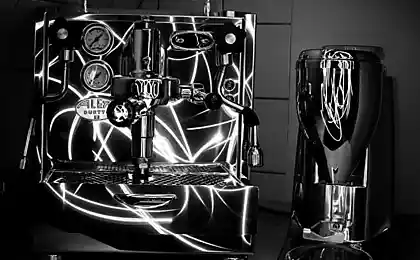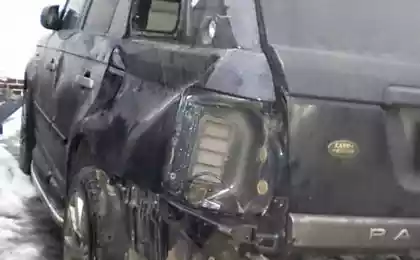857
Saving machines from the flood
Surprisingly, often flooding the car does not take place in the parking lot and on the road, and the drivers themselves often aggravate the situation! The main mistake is incorrect assessment of the situation, excessive expectations on the capabilities of the car or overconfidence. As a result, an attempt to force the "big puddle" ends with a stop at the most inopportune moment.
9 photos and text.

The main rule when driving through water obstacles - not knowing the ford, not poke your nose into the water. Puddle may be harmless appearance, but an attempt to overcome it can cause serious problems, especially if you decide to attack it in stride. After all, the water can be hidden any large object (stone, brick, tire) or pit open manhole - alas, things are even on city streets!
That is why, before the "go over the top" on the watery element, should assess their chances of overcoming obstacles. On a remote forest road will be the most reasonable shod boots and explore the bottom topography. The city has other tactics: visual assessment (benchmark can serve neighboring puddle objects such as curbs) and observation of other road users: going ahead or oncoming car "indicate", and depth, and the best "fairway».
Greater depth, evidence of failed "attacks" in the form of stalled cars - a good reason to choose another way to overcome an obstacle or in any other way, for example on the sidewalk, which is located above. But leave the lawn is not necessary: firstly, it is harming the environment, and secondly, the lawn can also be flooded, which is not always evident - in this case, you run the risk of stall to form a "swamp".
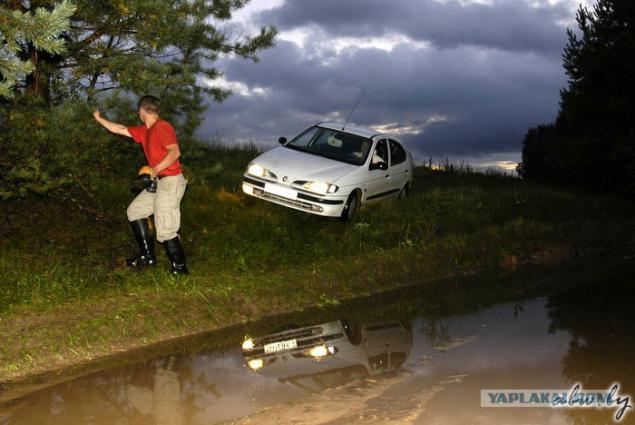
Theoretically, a car able to overcome a ford deep to half a meter. However, please note that when driving on the water gives a wave that you drive ahead. It is necessary to slow down or stop - wave goes back and can "get" to the elements of the ignition system, or worse, get into the engine through the air intake, and here and close to water hammer!
What are the consequences?
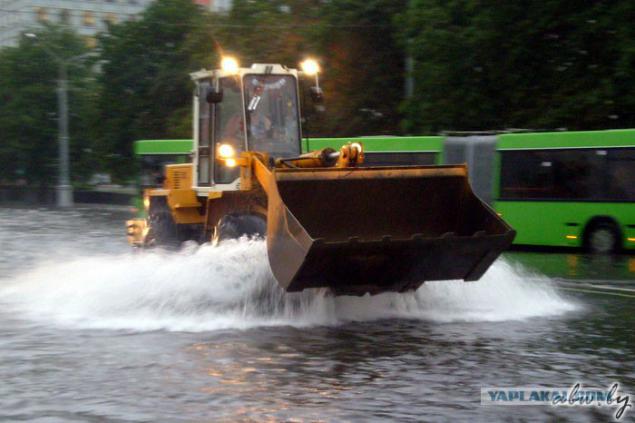
Water hammer is a result of water ingress through the air intake and the intake manifold into the combustion chamber of the engine and leads to damage connecting rod and piston. Therefore, if the engine stalls while overcoming obstacles or water if you came to the parking lot, found the car in flooded condition, do not hurry to start it, so as not to exacerbate the problem. One of the signs that water could get into the engine - wet air filter. By the way, paying for water hammer by CASCO insurance companies usually do not produce!

Do not forget that with a substantial "diving" when fording water will seek to penetrate all the low-lying sites: suspension, transmission, steering, electrical equipment. What this means? With regard to the mechanical parts, there is a problem in that water may enter through the seals into the node - same gear, the gearbox of the motor. If you're not lucky, the car owner automatically "falls" to "dissect" problematic nodes replace seals, gaskets, oil.
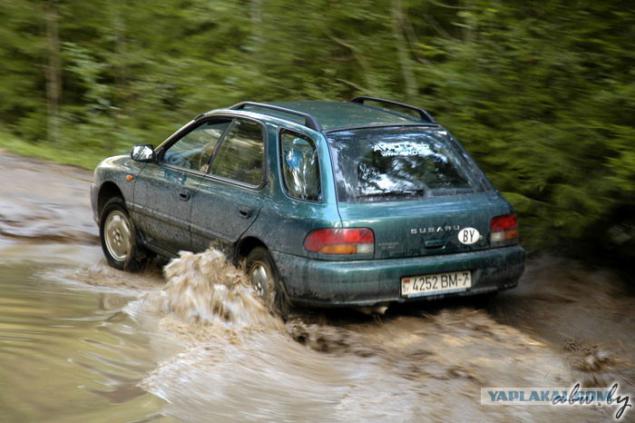
As for the flooded (even partially) machines, that is the trouble worse. Such "drowned" electricians called time bombs: over time can begin numerous and subtle "bugs" electrical equipment can only be prevented full bulkhead electrical parts.
The problem is that many machines harnesses routed along the rapids, electronic components are located under the seats, in the feet of the driver or passengers, so if even partially submerged car water gets to them very quickly, and "tight" performance, alas, helps.

If the car is flooded thoroughly, that is, the water penetrated into the interior, as soon as possible to disconnect the battery. Further requires drying and cleaning of all exposed water of electronic components and electrical components.
In sum, we give a few tips.
If the predicted heavy rains perestrahuytes and choose a safe parking place for the car: nisin and avoid places where flooding is possible, do not put the car near the trees - often showers accompanied by strong winds. If caught by surprise element and it is likely that a parking spot risks becoming a haven, driving the car until it was too late.
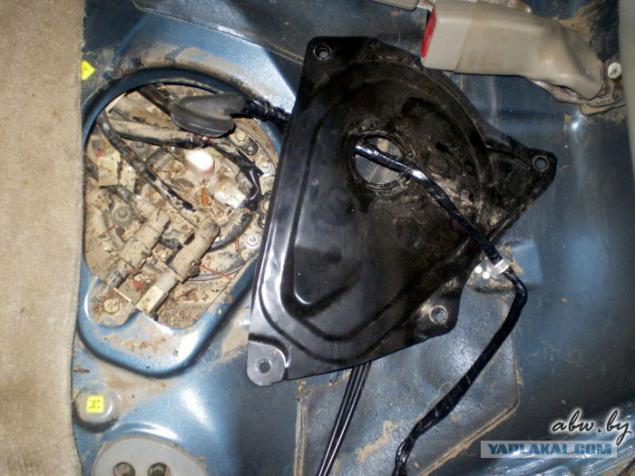
Before you force the flooded section of road (street), make sure that the ford you can do. Even if there is a "fairway", do not rush to move immediately after riding in front of the car - they can stop at any time. Wait until they are safely overcome obstacles, and caused a wave of calm.
Pre-select transmission and speed (it should be small and constant throughout the "swim") - this will depend on the engine speed. They should be at least average or better increased to overcome the resistance of the water and create pressure in the exhaust system (worth remove the "gas" or drown engine - water goes through the exhaust pipe).

If the engine stalls, it is important to determine what the cause. Filled with water elements ignition gasoline engine is still allowed to choose to "coast" in a pinch, you can try to "hold out" on the starter (start the car in gear, no cutoffs of coupling). But if there is the slightest suspicion of water hammer due to water entering the engine, it is necessary to evacuate the vehicle, do not start motor
Successfully overcoming water obstacle, do not forget that you need to dry the brakes, as soaked pads and discs (drums) will work very inefficiently. For their drying must perform several active braking.
source

9 photos and text.

The main rule when driving through water obstacles - not knowing the ford, not poke your nose into the water. Puddle may be harmless appearance, but an attempt to overcome it can cause serious problems, especially if you decide to attack it in stride. After all, the water can be hidden any large object (stone, brick, tire) or pit open manhole - alas, things are even on city streets!
That is why, before the "go over the top" on the watery element, should assess their chances of overcoming obstacles. On a remote forest road will be the most reasonable shod boots and explore the bottom topography. The city has other tactics: visual assessment (benchmark can serve neighboring puddle objects such as curbs) and observation of other road users: going ahead or oncoming car "indicate", and depth, and the best "fairway».
Greater depth, evidence of failed "attacks" in the form of stalled cars - a good reason to choose another way to overcome an obstacle or in any other way, for example on the sidewalk, which is located above. But leave the lawn is not necessary: firstly, it is harming the environment, and secondly, the lawn can also be flooded, which is not always evident - in this case, you run the risk of stall to form a "swamp".

Theoretically, a car able to overcome a ford deep to half a meter. However, please note that when driving on the water gives a wave that you drive ahead. It is necessary to slow down or stop - wave goes back and can "get" to the elements of the ignition system, or worse, get into the engine through the air intake, and here and close to water hammer!
What are the consequences?

Water hammer is a result of water ingress through the air intake and the intake manifold into the combustion chamber of the engine and leads to damage connecting rod and piston. Therefore, if the engine stalls while overcoming obstacles or water if you came to the parking lot, found the car in flooded condition, do not hurry to start it, so as not to exacerbate the problem. One of the signs that water could get into the engine - wet air filter. By the way, paying for water hammer by CASCO insurance companies usually do not produce!

Do not forget that with a substantial "diving" when fording water will seek to penetrate all the low-lying sites: suspension, transmission, steering, electrical equipment. What this means? With regard to the mechanical parts, there is a problem in that water may enter through the seals into the node - same gear, the gearbox of the motor. If you're not lucky, the car owner automatically "falls" to "dissect" problematic nodes replace seals, gaskets, oil.

As for the flooded (even partially) machines, that is the trouble worse. Such "drowned" electricians called time bombs: over time can begin numerous and subtle "bugs" electrical equipment can only be prevented full bulkhead electrical parts.
The problem is that many machines harnesses routed along the rapids, electronic components are located under the seats, in the feet of the driver or passengers, so if even partially submerged car water gets to them very quickly, and "tight" performance, alas, helps.

If the car is flooded thoroughly, that is, the water penetrated into the interior, as soon as possible to disconnect the battery. Further requires drying and cleaning of all exposed water of electronic components and electrical components.
In sum, we give a few tips.
If the predicted heavy rains perestrahuytes and choose a safe parking place for the car: nisin and avoid places where flooding is possible, do not put the car near the trees - often showers accompanied by strong winds. If caught by surprise element and it is likely that a parking spot risks becoming a haven, driving the car until it was too late.

Before you force the flooded section of road (street), make sure that the ford you can do. Even if there is a "fairway", do not rush to move immediately after riding in front of the car - they can stop at any time. Wait until they are safely overcome obstacles, and caused a wave of calm.
Pre-select transmission and speed (it should be small and constant throughout the "swim") - this will depend on the engine speed. They should be at least average or better increased to overcome the resistance of the water and create pressure in the exhaust system (worth remove the "gas" or drown engine - water goes through the exhaust pipe).

If the engine stalls, it is important to determine what the cause. Filled with water elements ignition gasoline engine is still allowed to choose to "coast" in a pinch, you can try to "hold out" on the starter (start the car in gear, no cutoffs of coupling). But if there is the slightest suspicion of water hammer due to water entering the engine, it is necessary to evacuate the vehicle, do not start motor
Successfully overcoming water obstacle, do not forget that you need to dry the brakes, as soaked pads and discs (drums) will work very inefficiently. For their drying must perform several active braking.
source

